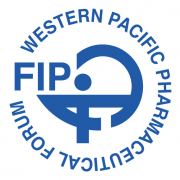PHARMACISTS: Prescribing vs dispensing
6 Aug, 2014
reference: http://www.mps.org.my/newsmaster.cfm?&menuid=36&action=view&retrieveid=3926
WE refer to the debate on the separation of roles of doctors and pharmacists in the dispensing and prescribing of medication in the Letters section of the New Straits Times since last month.
Pharmacists, dietitians, physiotherapists and other healthcare professionals have been working with doctors as members of the healthcare team to provide comprehensive healthcare in hospitals and other healthcare institutions, including medical health centres.
Doctors, including consultant specialists, have no qualms about working with other healthcare professionals for the benefit of the patients, or to seek the pharmacist’s professional advice on medications.
What we do not understand is why, when these doctors go into private practice, the pharmacist’s services are no longer of use to them or their patients?
Pharmacists are the only professionals who are trained and professionally qualified as well as recognised in medicine dispensing all over the world.
Yet, pharmacists in the private sector in Malaysia are not treated as such.
The duties of most community pharmacists are reduced to over-the-counter service, dealing with health supplements and minor medications, like creams, cough and flu medicines.
They are not involved in the prescribing and dispensing functions, when the Health Ministry has already expanded their scope of functions and services. Why the double standards?
The argument by some quarters that dispensing by pharmacists will cause inconvenience to the public, or that there are shortages of pharmacies in rural areas, does not hold water anymore.
For the past three years, under the eMass programme, pensioners can have their prescriptions for medicines, which are not available from the government health facilities, from private pharmacies.
As for the shortage of pharmacies in the rural areas, have they not heard about the spontaneous progression on supply-and-demand economic dynamics?
Without receipt of prescriptions for supply of medicines, do these people expect pharmacies to be set up in rural areas, or to be open 24 hours?
Even doctors will be reluctant to set up such clinics in remote areas where the population is too small.
The separation of roles in the dispensing of medicine is not a Western phenomenon. It had been practised in many countries, even in Asia and the Middle East, as mentioned by Associate Professor Dr Mohamed Azmi Ahmad Hassali of Universiti Sains Malaysia.
Indonesia and India have had this system in place for a long time and these countries have much larger rural and isolated areas than Malaysia. Other Asian countries such as the Philippines, Taiwan, Korea and Japan, have also switched to this practice.
If the practice is not beneficial, why are more countries adopting it? Malaysia and Singapore, which share the same historical background in medicine, are among the very few countries in the world where doctors are still allowed to dispense medicines.
Another favourite argument is that the cost of medical treatment will escalate. The power of supply and demand mechanics will ensure that clinics which overcharge will be shunned by the people. Many more private clinics, too, will be opened, especially when there is an over production of doctors in the last decade or so.
Moreover, the charges of the medicines supplied to patients by clinics are too high, even though, in most cases, the clinics buy these medicines at much cheaper prices.
We are often rated as having one of the best public healthcare provision-system in the world. This is because the population has access to a government health facility within 5km from their residence — government health centres — where the dispensing of medicines and medication counselling are performed by pharmacists.
Having pharmacology as a subject in one year of the usual five-year course in medicine does not mean doctors are trained to do the work of a pharmacist.
Pharmacologists spend several years learning pharmacology but they are not allowed to prescribe or dispense medicines unless they are clinical pharmacologists, that is, they are also doctors.
Pharmacists too, are trained in clinical pharmacy where they also learn about diseases, symptoms and treatment.
They are also taught to access patient conditions in the clinical ward rounds but this does not mean they can do the work of the doctors. Pharmacists and doctors are two different professions.
Under the Poisons Act, 1952, doctors are allowed to supply medicines to their patients, mainly because from those pre independence days to the 1980s, there were very few pharmacists in our country.
However, there is no provision for private doctors to delegate dispensing to unqualified workers.
Doctors are expected to dispense medicines to patients. But how many private doctors dispense the medicines themselves? In almost all the private clinics, the medicines are dished out by unqualified clinic assistants.
Most of these dispensers are not pharmacists, but school-leavers with in-house training in basic dispensing and without the supervision of doctors who are in separate consultation rooms.
And, they do not even adhere to the basic requirement for dispensed medications, like the correct labelling with the names of the medicines as stated in the Poison Regulations.
It is for the protection of the patients that prescribing and dispensing need to be separated. Patients’ safety should never be compromised. In the developed world, pharmacists are requested to contribute more to the primary healthcare so that doctors can provide better and more accurate diagnosis and treatment, the main area of their training.
Gan Ber Zin, Seremban, Negri Sembilan
– See more at: http://www.mps.org.my/newsmaster.cfm?&menuid=36&action=view&retrieveid=3926#sthash.1k8Ksm5Y.dpuf
